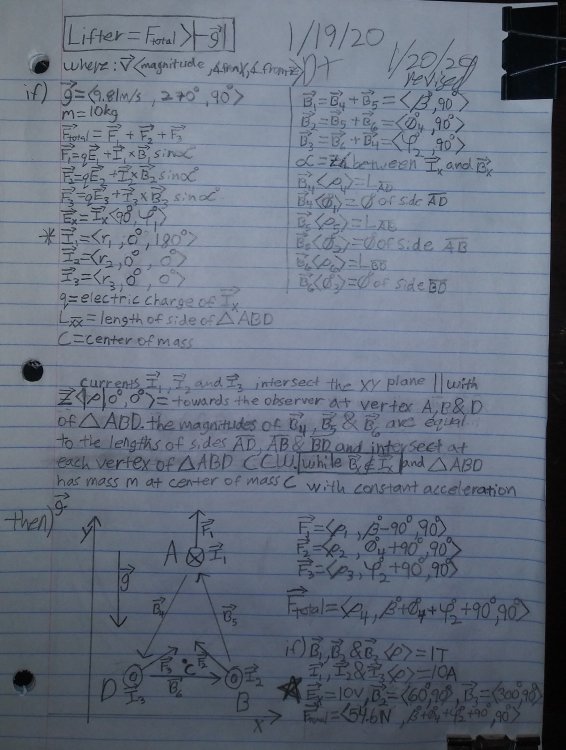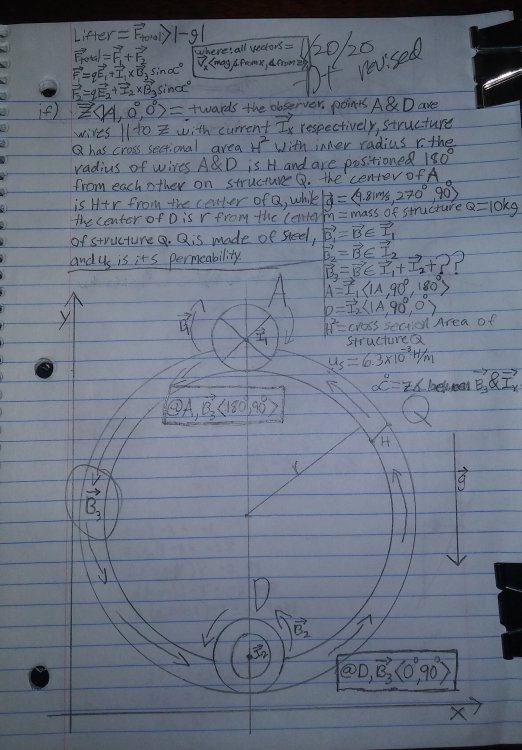Leaderboard
Popular Content
Showing content with the highest reputation on 01/21/20 in all areas
-
For intrinsic curvature that is correct. An example of intrinsic curvature would be the old Atari 'Asteroids' game. The left side of the screen is identified with the right hand side, and the top with the bottom, such that when your spaceship disappears from one side of the screen it reappears on the other. The screen would be an example of a 'flat' 2dimensional torus, as opposed to the surface of a 'regular' torus which looks like a doughnut, and requires a 3rd dimension to visualize. Extrinsic curvature actually requires an external 'embedding' dimension. IOW a 4th dimension to describe 3dimensional curvature. An example of extrinsic curvature is the rubber sheet analogy of GR, and it is precisely why it is problematic. The flat 2dimensional sheet actually bends into an external ( 3rd, embedding ) dimension, when a mass is placed on it. I don't really consider the space-time of GR to be 'bendable' ( whatever that means ). But GR allows me to assign a co-ordinate system to that space-time, and the altered spacing of the co-ordinate gridlines in the presence of mass-energy ( or energy-momentum ) is the equivalent of 4dimensional 'curvature'. These co-ordinate gridlines are essentially equipotential field lines of the gravity field.3 points
-
The fundamental mistake your making is assuming fundamental particles are made up of other particles. It's a common mistake and error, a large part of that error is thinking particles are corpuscular solids. The SM particles are field excitations. Lets take an example to prove the error on thinking. Take two protons and accelerate them to near c, then have a scattering collision. Now ask yourself the following question, if the rest mass of both protons is 938 MeV, how did this collision form a Higgs boson or in other reactions a top quark ? The Higgs boson isn't part of the proton as it is comprised of quarks and gluons, Secondly the mass of the Higgs boson far exceeds the rest mass of the two protons. Thinking that your colliding solid balls of matter particles and ending up with pieces of different types of matter particles is incorrect. What you really need is their wavefunctions and how those wavefunctions interfere either in constructive or destructive interference for both elastic and inelastic collisions of the particles wavefunctions. While your at it consider how it's possible for one type of particle and not others are capable of passing through solid matter while other particles do not. This can also occur with particles that would either get absorbed or reflected by that barrier of the same type. Ie quantum tunnelling. A little side note. The only way I have found to understand thermal equilibrium of particle states is by throwing away any matter like view point. Toss any corpuscular visualizations away and deal strictly through the QFT wavefunctions. (Also done in String theory) In thermal equilibrium different particle species cannot be distinguished from one another their Compton or DeBroglie wavelength becomes identical etc. (Ie they are symmetric to each other in any measurable quantity. (Hint symmetry breaking occurs as the particle species drop out of equilibrium) Bose Einstein or Fermi condensate is the same process. In this state all particles lose their identity from another. Hard to explain those with a little billiard ball point of view.2 points
-
https://phys.org/news/2020-01-particle-chip.html This image, magnified 25,000 times, shows a section of a prototype accelerator-on-a-chip. The segment shown here are one-tenth the width of a human hair. The oddly shaped gray structures are nanometer-sized features carved in to silicon that focus bursts of infrared laser light, shown in yellow and purple, on a flow of electrons through the center channel. As the electrons travel from left to right, the light focused in the channel is carefully synchronized with passing particles to move them forward at greater and greater velocities. By packing 1,000 of these acceleration channels onto an inch-sized chip, Stanford researchers hope to create an electron beam that moves at 94 percent of the speed of light, and to use this energized particle flow for research and medical applications. Credit: Neil Sapra1 point
-
! Moderator Note You have already demonstrated very well that you don’t know what you are talking about. I don’t think you need to start a new thread to provide more evidence.1 point
-
Yes, that's what people should do. When you have questions not directed at the OP, unless it's simple clarification of someone's answer, it's likely that it needs a new thread.1 point
-
! Moderator Note (emphasis added) This isn't the WAG forum. Your refusal to engage in discussion based on established physics is inconsistent with posting in a science forum. Your refusal to provide a mathematical model and/or evidence is inconsistent with the rules of our speculations section.1 point
-
1 point
-
My tutor told me I need to understand more calculus before derivatives can be understood. They also explained my Z angles were off for my B vectors, and I needed to specify my vector notation. So arbitrary vector V = V<magnitude, angle from X origin, angel from Z origin> I still don't know how to calculate induced magnetic field in steel like the ?? State in the second picture below. If I can answer that, maybe I can answer how the initial B fields of the first picture are generated 1st 2nd -DandelionTheory1 point
-
...Mordred, I've said something like this to you before (about other people than Conjurer), but I think you are trying to tell Conjurer things at much too high a level.1 point
-
1 point
-
1 point
-
1 point
-
Ok! Just so I follow: due to the force from the magnetic fields the rig will accelerate. How is momentum conserved?1 point
-
This has become a mess. 1) Which diagram are we supposed to be discussing ? 2) The diagrams show an xy plane (no z axis) with three currents represented by dots. Are you using the dot and cross convention for currents normal to the plane or what? If so please enclose the currents in a circle. 3) The pictures are necessarily shrunk to fit in the post but enlarge to be readable if downloaded. Thanks1 point
-
I agree. It seems like a lot of them these days get their scientific information from an episode of Star Trek which claims particles are identical being a cover-up, so it doesn't create a public Star Trek Universe scare of people actually being murdered by transporter technology. I don't believe I could have made it any more clear. If you are completely lost, then I am at a loss of what else to tell you about it. I don't even know what this forums stance is on that or what stance you expect me to take here. I made a proof almost a year ago in a thread when I first started using the forum. Then studiot was so convoluted with the idea that I had a problem with relativity, I couldn't even get to a point to rather a biological entity actually ages under the effects of SR or not. I think it was called proof of SR in Minkowski Spacetime or something like that.-1 points
-
The reason you find or take a limit is when the values cannot give you an exact answer in an equation. Then the equation can be graphed, and the limit assumes the value that the function approaches on the graph. It is an extra step that can be taken to make a graphical analysis to find an approximate answer by looking at a graph. You can say that it is a certain value, even though the calculation of the variables in the equation cannot give you an answer. It is another way of trying to deal with infinity or infinitesimals in of itself. The main reason why this method isn't used in a lot of work is because it is not known if it has been proven to be reliable, but it has been proven to be reliable when finding the derivative. Limits can potentially give false values, presumably. I have never seen any evidence of that.-1 points










